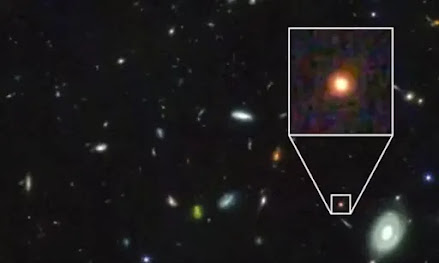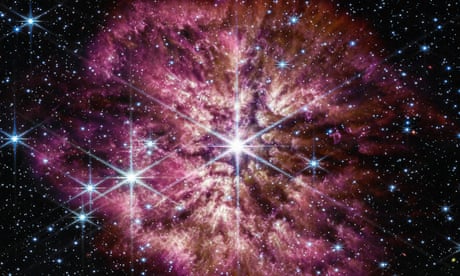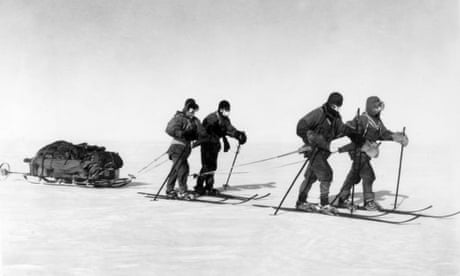Robin McKie
Sat 20 May 2023
Widely depicted as evil spirits or blood-sucking demons, bats have had a poor press over the years. No vampire film, from Dracula to Buffy, has been complete without an entrance of one of these harbingers of death.
But these grim portrayals demean the bat. We have much to learn from them, insist researchers who now believe bats could be crucial in helping us cope with future pandemics.
As a result, a global genetics project has been launched to discover how bats avoid the worst impacts of some of the world’s most pernicious viruses, including the agent responsible for Covid-19. “Bats have the potential to teach us a great deal about how to fight off disease,” said researcher Emma Teeling, of University College Dublin, who played a key role in setting up the project, Bat1K.
Bats are remarkable for a multitude of reasons, says Teeling. They are the only mammals that can fly; they live exceptionally long lives for creatures their size; and many of them use sound waves to locate their prey. They also come in a remarkable variety of shapes and sizes, ranging from the bumblebee bat, the size of an insect, to Australian fruit bats which have two-metre wingspans.
Some bats catch fish, other species feed on insects – and three drink blood: the common vampire bat; the hairy-legged vampire bat; and the white-winged vampire bat. “Other species have evolved the longest mammalian tongues so they can stick them down into huge long flowers, to get their nectar,” added Teeling.
However, the reason for scientists’ current bat ardour stems from the discovery that they can host a startling number of potentially lethal viruses – including the coronaviruses that caused the Sars and Mers epidemics as well as the Marburg, Nipah and Hendra viruses – but without suffering any apparent ill effects. “There is a kind of peace treaty between bats and the pathogens they host,” virologist Joshua Hayward, of Burnet Institute in Melbourne, said in Nature recently.
Bats are also thought to be the original source of the Sars-CoV-2 virus which causes Covid-19. “Horseshoe bats from Asia are considered to be the original reservoir of the virus that evolved to become Sars-CoV-2, which changed most likely in an intermediate species of mammal,” said Teeling. “That animal became infected by a bat, probably in a market, changing the viral progenitor of Sars-CoV-2 into an agent that could spread through humans. The end result was the Covid-19 pandemic.”
As a result, Teeling considers it most likely that Sars-CoV-2 was not created in a lab, given the amount of recent evidence suggesting that most likely happened accidentally during the mixing of animals in the market.

These discoveries raise a key issue, however. How do bats act as reservoirs for so many viruses that are harmful to other animals, including humans, but are themselves left unaffected? It is a puzzle that scientists are now working to solve. “The answer has got to do with their ability to fly,” said Teeling.
Flight is enormously demanding, requiring the expenditure of massive amounts of energy for any creature that wants to take to the air. Releasing this intense energy within a mammal’s body should then lead to the breakdown of some of its cells. Bits of DNA would be expected to break off and float around its body.
In non-flying mammals, these pieces of genetic material are identified by immune cells and are often treated as signs that an invasion from a disease-causing organism is occurring. A counterattack is launched and this can trigger intense inflammation. In many cases – including those of Covid-19 – this inflammation is often the key cause of serious reactions that can lead to death.
“But bats lack that intense response,” said Teeling. “Over the course of their evolution – which began around 80 million years ago – they have modulated their immune systems so that their responses have dampened down. Inflammation does not occur nearly so often or severely. As a result they can carry all these viruses without suffering dangerous reactions.”
One key approach involves the Bat1K project which was founded by Teeling along with Professor Sonja Vernes, of St Andrews University, with the involvement of other institutions such as the Max Planck Institute of Molecular Cell Biology and Genetics, in Dresden, and the Sanger Institute near Cambridge.
Its goal is ambitious but straightforward: to create high-quality genomes for all bat species. In this way, it should be possible to unravel the entire DNA instructions – which come in billions of units – that are carried by the 1,450 or so species of bat that have evolved across our planet.
To date, only a handful of bat genomes have been sequenced, though scientists are confident that from these analyses it should soon be possible to unpick the precise ways by which bats avoid succumbing to the viruses they host – with the ultimate goal of using this knowledge to develop medicines that could mimic that behaviour in humans.
“Bats are not responsible for bringing disease to humans,” added Teeling.
“We have encroached on their lives, not the other way round. More importantly, we need to be prepared for the next pandemic and if bats can point out ways to modify our immune responses speedily, that will demonstrate just how important they are to our world.”


















